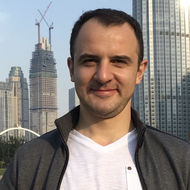In April 2016, the Karabakh conflict erupted into prominence again. As always, the full extent of what happened during those four days in April was not conveyed in mainstream global media. However, even the most passive news observer must have realized that something of note had happened in Karabakh, something that went beyond the usual ceasefire violations and sniper-war. By any account, this short escalation turned out to be one of the deadliest phases of the ongoing war in Karabakh. A look at how the escalation progressed, right from the very first hours, reveals why the question of war and peace once again became so very central to those who were affected by the Karabakh conflict.
It is futile to play the game of historical what-ifs when discussing the April 2016 escalation. Leaving aside propaganda texts, which usually portray the results of the April escalation either as a victory or defeat, it becomes clear that the war knocked on everyone’s doors again. There were difficult days full of destruction, frustration and hope. Those days shook our fragile stability once again emphasizing that even the status quo can be macabre.
It is difficult to measure just how much the average Armenian was satisfied with the explanations the government provided about the scope of casualties and destruction during the April escalation. The government was quick to praise the heroes of those days, but failed to punish those whose task it was to keep the army away from corruption allegations. After April, a plethora of explanations were provided but none of them satisfied the parents of the fallen soldiers and society at large. Throughout the last turbulent year, many people continued to seek answers to the “What went wrong on the frontline” question. The government of Artsakh was quick to announce pan-Armenian fundraising in order to fortify the frontlines, a step which was widely interpreted as implicit acceptance of policy drawbacks. At any rate, efforts to mitigate uncomfortable questions largely failed as society’s deep-rooted concerns still remain valid.
It is undeniable that over the past year, the understanding of the conflict has also changed. Since 2008, the only question that was dominant among policy-makers and practitioners alike was not whether the conflict would resume or not but when and how it would. Therefore, the likelihood of a breakout of major hostilities always remained high and this feature had become a characteristic component of this conflict. This is to suggest that since 2008, the conflict in Nagorno Karabakh has transformed into a low-intensity conflict, which entailed phases of escalation, intensive violations of the ceasefire and times of short-term truce. From this categorization, it becomes clear that what happened in April 2016 was a short-term intensive escalation of the low-intensity conflict.
It is worth noting that the April escalation has not only deepened the sense of insecurity among the conflicting societies but, rather paradoxically, has also contributed to their militarization. The ruling elites in both Armenia and Azerbaijan raised the stakes by talking more about the unavoidability of the war. The government of Nagorno Karabakh even changed its Constitution to bring it in line with wartime logic and its requirements. The discourse over the resolution perspectives of the Nagorno Karabakh conflict also came to dominate the parliamentary elections in Armenia.
Especially important for the dynamics of the past year was the assertion of the leaders of Armenia and Azerbaijan that currently there were no negotiations. These rather inconceivable confessions went in parallel with the declining reliability of the international system of security.
With hindsight one may reasonably claim that the Karabakh conflict has been held hostage for around 30 years now. A crucial aspect of this situation is that it needs to be freed from this situation as it continues to shape our past and present. New paradigms are slow to emerge whereas old patterns of the Karabakh conflict perceptions reached new heights in the justifications for domestic policy failures. The April escalation came to reemphasize that the Karabakh conflict has permeated all layers of the social fabric. Although this might seem too much of a cliché, April 2016 was indeed a wake-up call. The biggest question that remains is whether we can integrate its lessons into our understanding of ourselves.


